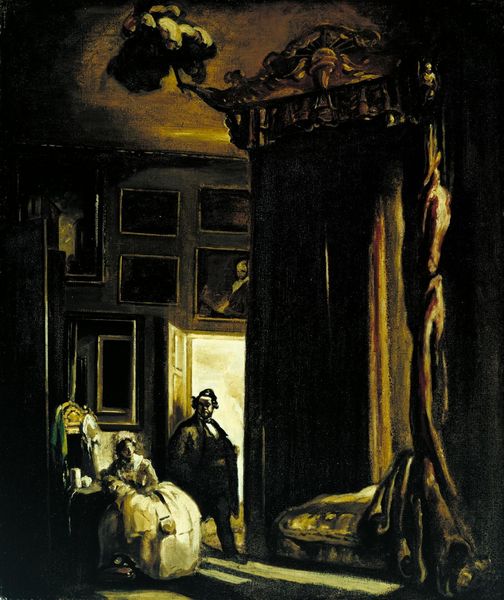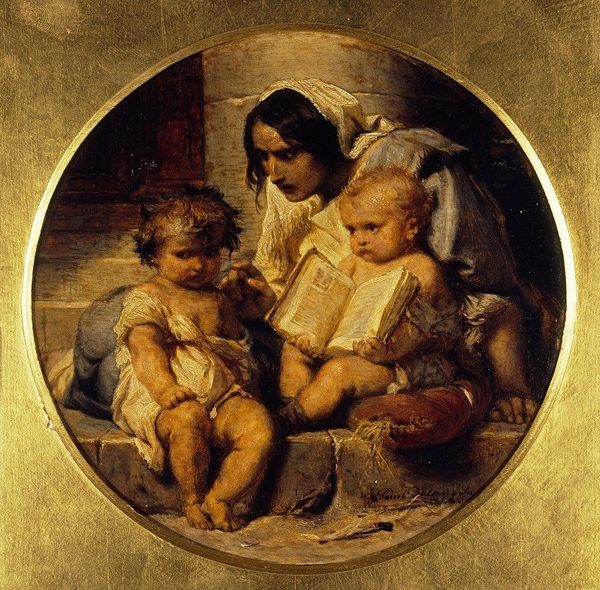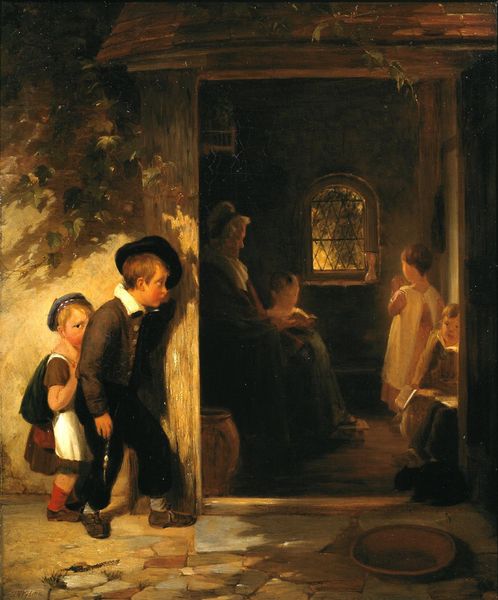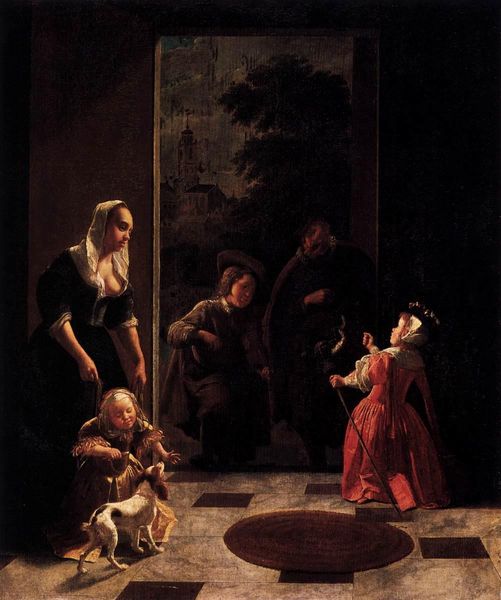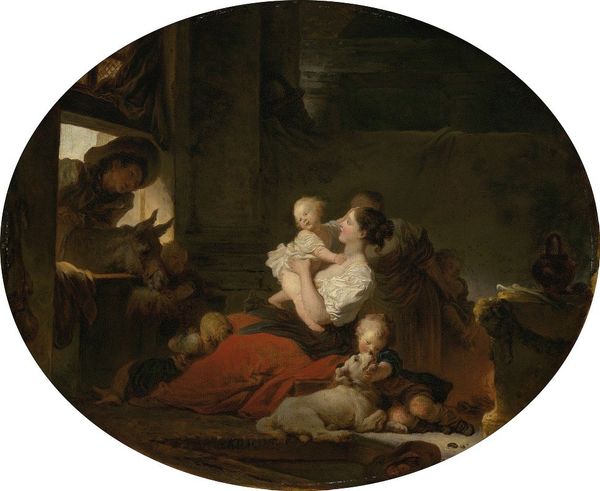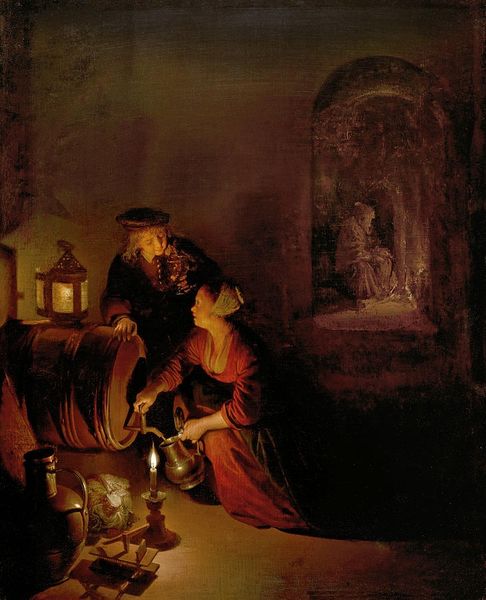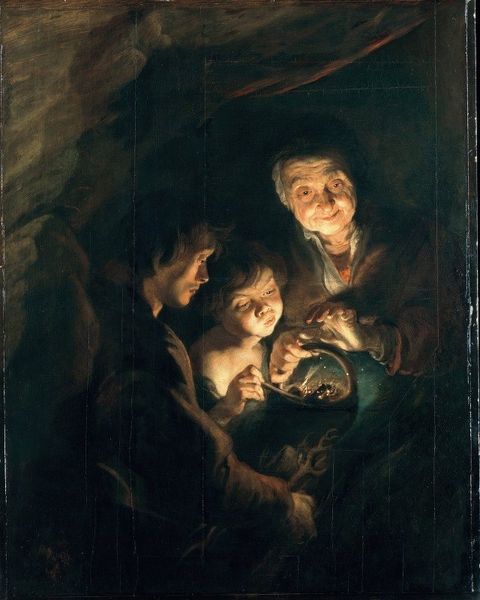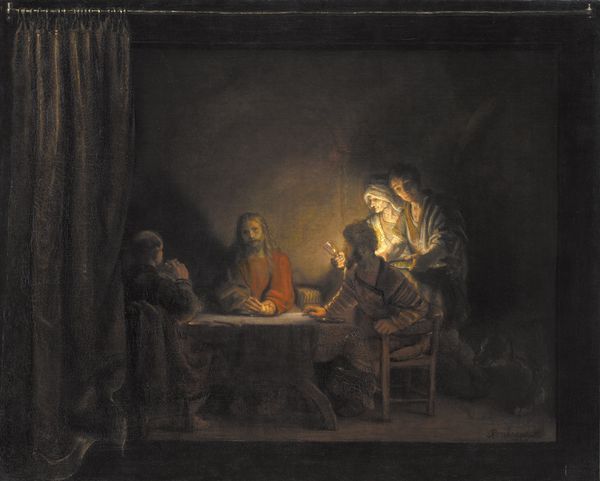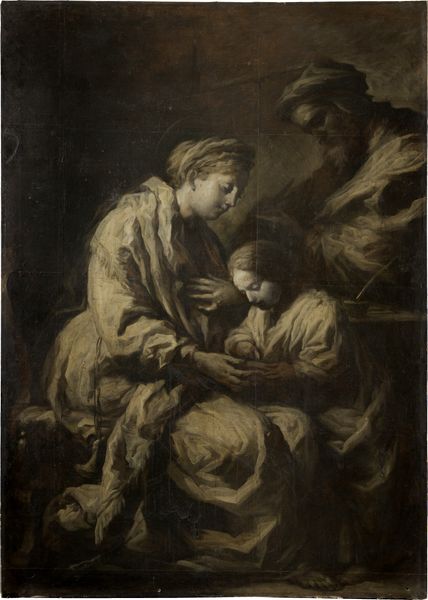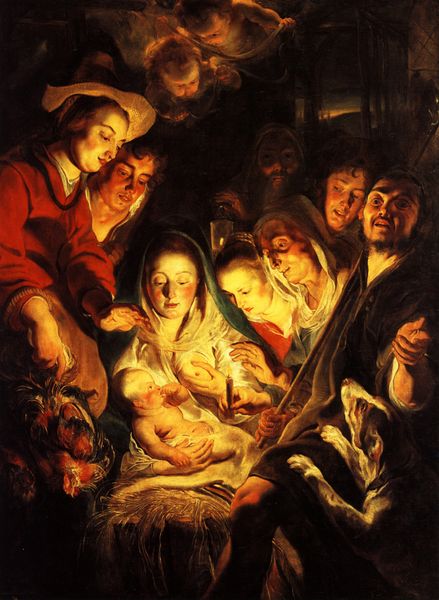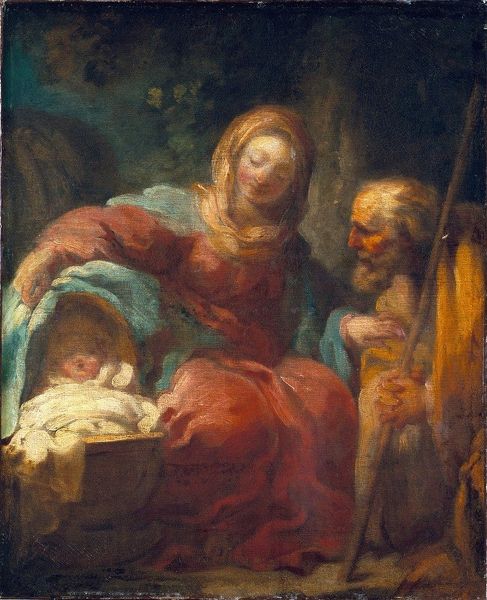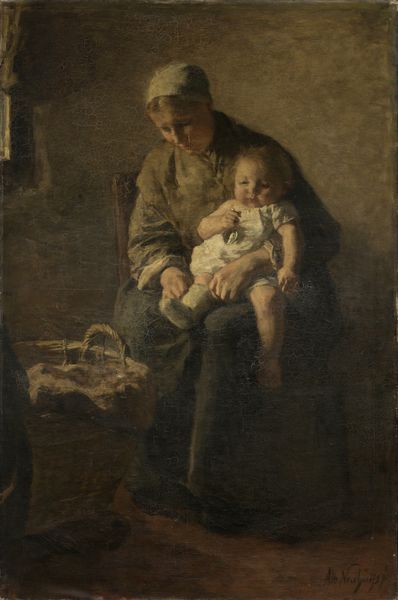
painting
#
painting
#
figuration
#
history-painting
#
italian-renaissance
Copyright: Public domain
Editor: This is a detail from Domenico Beccafumi's "Birth of the Virgin," painted around 1540 during the Italian Renaissance. It's fascinating how Beccafumi creates such a quiet, almost melancholic atmosphere, despite the joyful subject. The colours are subdued and the figures seem caught in a moment of reflection rather than celebration. What symbolic meanings do you see within the figures and the arrangement itself? Curator: The subdued palette is intentional. In iconographic terms, it prepares us to consider the weight of the Virgin's future. Consider the contemplative Joseph, the earnest attendant holding the cloth - these are not simply supporting characters. They prefigure the compassion that will be central to her story, and therefore Christianity. Editor: The small dog, though - is that merely a domestic detail, or does it hold some other significance? Curator: Dogs are frequently symbols of fidelity, watchfulness, and domesticity. In this context, perhaps the dog highlights the sanctity of the household, its protective nature, and the faithfulness required of Mary. But, also notice how small it is in comparison to the other characters! The relative sizes give clues to the narrative hierarchy of its subjects. What emotions does the detail of the child at the edge of the artwork evoke? Editor: An element of foreshadowing. And the child brings with it an echo of future tenderness and potential loss, because that is positioned on the edges of the composition and partly veiled in shadow, lending an unexpected, and, yes, melancholic overtone. Curator: Precisely. This birth, like any birth, promises hope, yet it is an anxious birth, considering what this birth implies. In this particular context, we already understand the challenges ahead, not just personal happiness. I will have to revisit the images that portray animals! Editor: It's made me think about how even seemingly minor details can carry significant symbolic meaning, adding layers of depth to our understanding. Thanks.
Comments
No comments
Be the first to comment and join the conversation on the ultimate creative platform.

